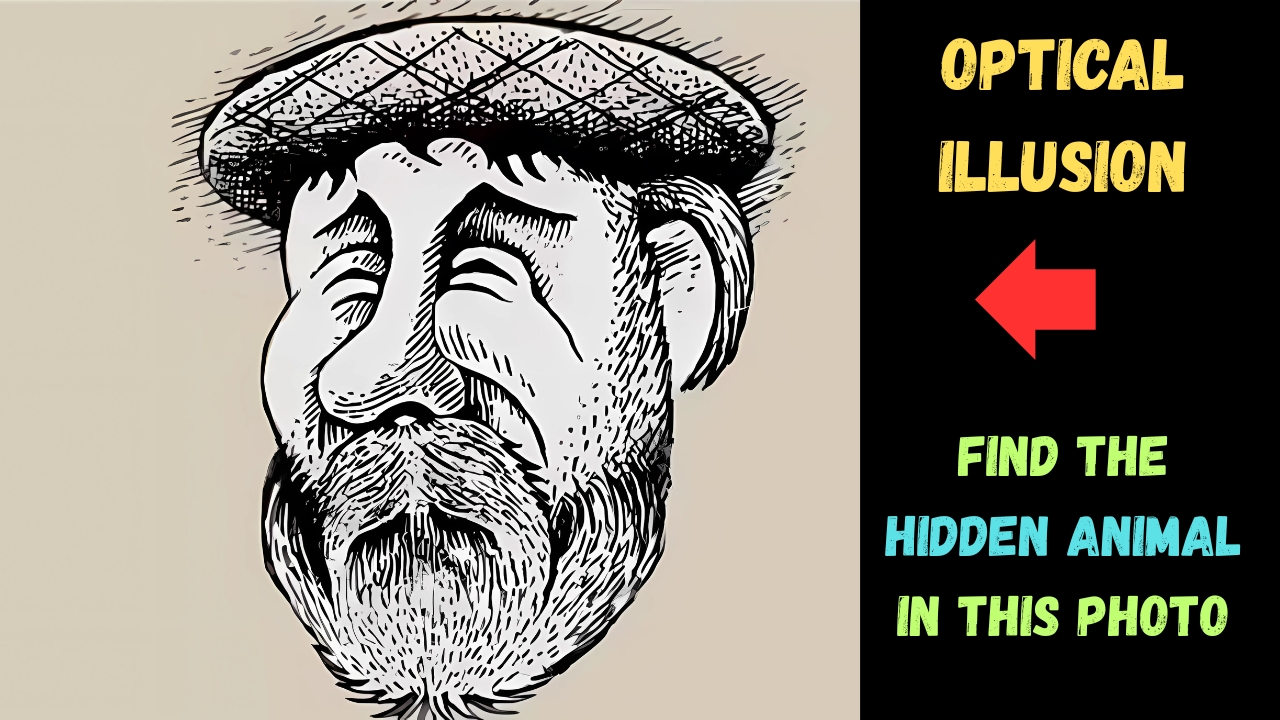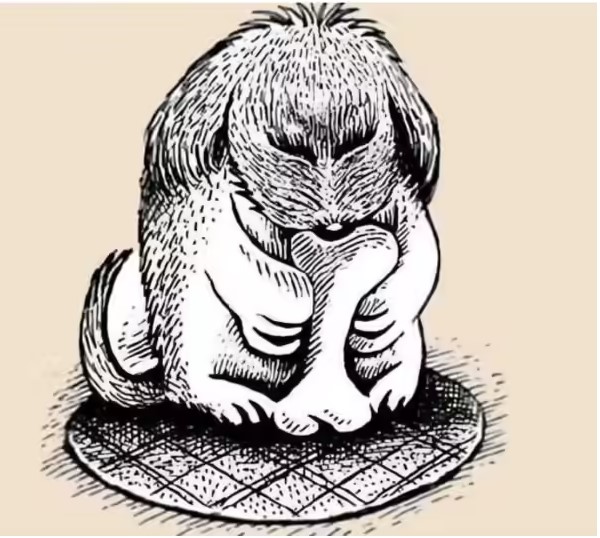When you look at an image and suddenly realize there’s a hidden animal staring back at you, your brain has just performed an extraordinary feat of visual processing.
Optical illusions that conceal animals within seemingly ordinary scenes reveal fascinating insights into how our minds construct reality from the raw data our eyes collect.
Think of your visual system as a sophisticated interpretation machine rather than a simple camera.
While a camera mechanically records whatever light hits its sensor, your brain actively constructs what you “see” by combining sensory input with expectations, memories, and pattern recognition systems.
This construction process creates opportunities for visual artists and scientists to hide images within images, challenging our perceptual assumptions.
The most compelling hidden animal illusions work by exploiting a fundamental principle: your brain seeks to organize visual information into recognizable patterns as quickly as possible.
When presented with ambiguous visual data, your mind typically locks onto the first coherent interpretation it finds, making it surprisingly difficult to see alternative arrangements of the same visual elements.
The Psychology of Pattern Recognition

Your brain processes visual information through multiple parallel systems, each specialized for different types of recognition tasks.
One system focuses on identifying faces and figures, while another analyzes spatial relationships and movement patterns.
Hidden animal illusions succeed by presenting visual information that can be interpreted by different recognition systems depending on your viewing perspective or mental approach.
Consider how this works in practice. When viewing an image that contains both a human portrait and a concealed dog, your face-recognition system immediately identifies the human features and sends a strong “face detected” signal to your conscious awareness.
This initial recognition creates a kind of perceptual lock that makes it challenging to see alternative interpretations of the same visual data.
Breaking free from this initial interpretation requires what cognitive scientists call “cognitive flexibility” – the ability to consciously override your brain’s first instinct and actively search for alternative patterns within the same visual information.
Why Some People Spot Hidden Animals Faster Than Others
Individual Differences in Visual Processing
The speed at which someone identifies a hidden animal depends on several interconnected cognitive factors.
People with strong spatial intelligence often excel at these challenges because they can mentally rotate and reorganize visual information more easily.
This skill proves particularly valuable when the hidden animal becomes visible only from a different perspective or orientation.
Visual processing speed also plays a crucial role. Some individuals can rapidly cycle through multiple interpretations of ambiguous images, while others become more deeply committed to their initial perception.
Neither approach is inherently superior – they simply represent different cognitive styles with distinct advantages in various situations.
The Role of Experience and Expectation
Your previous experience with optical illusions significantly influences your performance on new challenges. Regular exposure to visual puzzles trains your brain to maintain flexibility when interpreting ambiguous images.
You develop mental strategies for systematically exploring different perspectives and avoiding perceptual locks.
Cultural background can also influence pattern recognition.
People from different cultures may have varying levels of familiarity with certain animals, artistic styles, or visual conventions, affecting how quickly they recognize hidden elements within illusions.
The Neuroscience Behind Perspective-Shifting Illusions
How Your Brain Switches Between Interpretations
When you successfully identify a hidden animal after initially seeing something else entirely, specific neural networks in your brain coordinate a remarkable switching process.
The visual cortex maintains multiple potential interpretations of incoming data, but consciousness typically accesses only the strongest or most contextually appropriate interpretation.
Neuroimaging studies reveal that when people experience these “aha!” moments of recognition, there’s increased activity in areas responsible for attention control and cognitive flexibility.
Your brain essentially performs a controlled override of its initial interpretation, allowing previously suppressed visual patterns to reach conscious awareness.
Training Your Visual Perception Skills
Regular practice with optical illusions can enhance your brain’s flexibility in interpreting visual information. This training creates lasting improvements in several cognitive areas.
Your attention control improves as you learn to consciously direct focus toward different aspects of complex images.
Pattern recognition abilities strengthen through exposure to diverse visual arrangements and hidden elements.
Think of this training as developing a more sophisticated visual vocabulary.
Just as learning new languages expands your ability to express complex ideas, practicing with visual illusions expands your brain’s repertoire of pattern recognition strategies.
Practical Applications of Hidden Image Research
Medical and Diagnostic Applications
Understanding how people process hidden visual information has important medical applications.
Researchers use similar principles when developing diagnostic tools that help doctors identify subtle abnormalities in medical imaging.
Radiologists, for example, must train their visual systems to spot small tumors or other anomalies that might be “hidden” within normal tissue patterns.
Educational and Cognitive Assessment
Visual perception tests incorporating hidden elements serve as valuable tools for assessing cognitive development in children and monitoring cognitive health in older adults.
These assessments can reveal important information about attention, memory, and executive function without requiring verbal responses or cultural knowledge.
Advanced Techniques for Solving Hidden Animal Challenges
Systematic Scanning Strategies
Developing a methodical approach to examining images can dramatically improve your success rate with hidden animal illusions.
Start by examining the image at its intended orientation, noting the primary elements your brain immediately recognizes.
Then systematically explore alternative viewing angles – try rotating the image 90, 180, and 270 degrees to see if new patterns emerge.
Pay special attention to negative spaces – the areas between and around primary visual elements.
Many hidden animals are cleverly concealed within these overlooked regions, becoming visible only when you consciously focus on background rather than foreground elements.
Adjusting Your Visual Focus
Practice shifting between focused and relaxed viewing modes. Sometimes hidden animals become apparent when you allow your eyes to unfocus slightly, similar to viewing stereogram puzzles.
This relaxed focus can help override your brain’s tendency to lock onto specific interpretations and reveal alternative organizational patterns within the image.
The Cognitive Benefits of Visual Challenge Training
Enhanced Mental Flexibility
Regular engagement with hidden animal illusions provides excellent exercise for cognitive flexibility – your ability to switch between different mental frameworks and approaches to problem-solving.
This skill transfers to many real-world situations where you need to consider multiple perspectives or adapt to changing circumstances.
Improved Attention and Concentration
Working through visual puzzles strengthens your sustained attention abilities and resistance to distraction.
The focused concentration required to spot hidden elements translates into enhanced performance on many other cognitive tasks requiring sustained mental effort.
Creating Your Own Hidden Animal Illusions
Understanding the principles behind effective hidden animal illusions can help you appreciate the artistry and psychological sophistication required to create compelling visual puzzles.
Successful illusions balance multiple competing interpretations while ensuring that each remains plausible and recognizable once discovered.
The most effective hidden animal designs incorporate elements that serve dual purposes – lines that define a human nose in one interpretation but represent a dog’s ear when viewed differently.
This dual functionality creates seamless transitions between alternative interpretations rather than jarring shifts that break the illusion’s coherence.
Optical Illusion Answer

Frequently Asked Questions
Q: Does being able to quickly spot hidden animals really indicate higher intelligence? A: While visual perception speed correlates with certain cognitive abilities like spatial intelligence and attention control, it represents just one aspect of overall intelligence.
Success with these puzzles reflects specific cognitive strengths rather than general intellectual superiority.
Q: Can practicing with optical illusions improve my overall visual perception skills? A: Yes, regular practice with visual puzzles can enhance attention control, pattern recognition, and cognitive flexibility.
These improvements often transfer to other tasks requiring careful visual analysis and mental flexibility.
Q: Why do some hidden animal illusions work better when viewed upside down? A: Rotating images disrupts your brain’s automatic face and object recognition systems, which are optimized for upright orientations.
This disruption creates opportunities for alternative pattern recognition systems to identify different organizational structures within the same visual data.